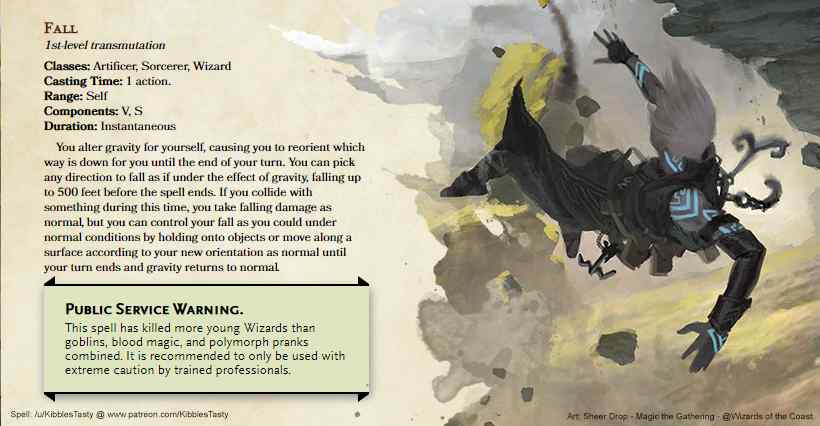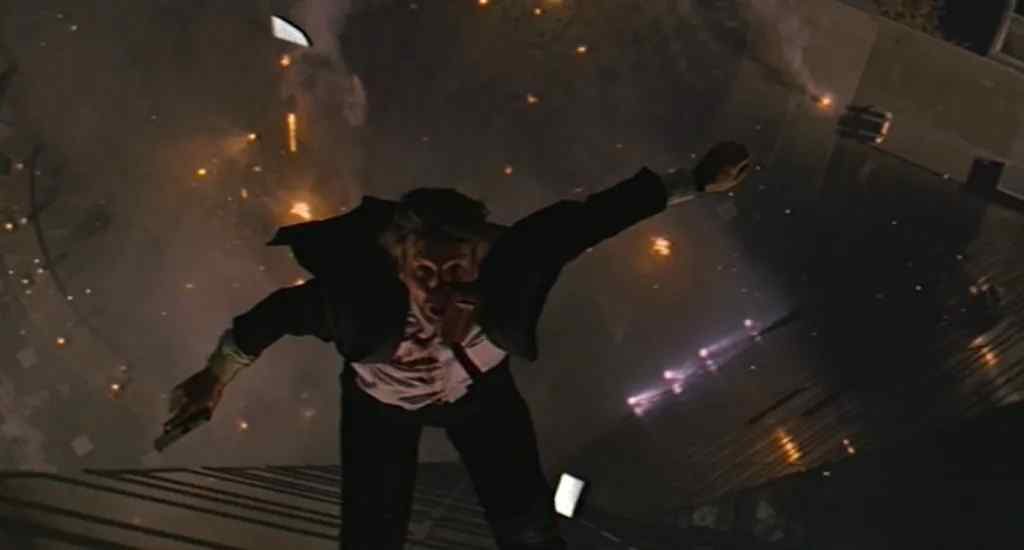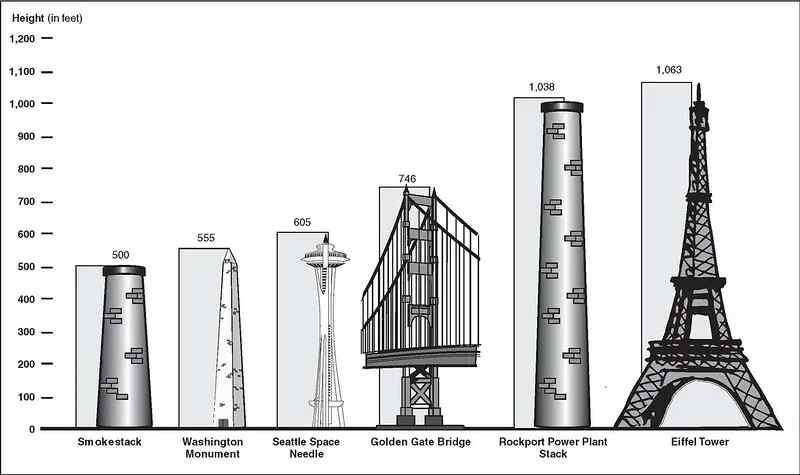Imagine soaring through the skies, defying gravity as you explore the vast realms of your Dungeons & Dragons (DnD) 5th Edition campaign. Suddenly, a misstep or a failed save plunges you into a freefall, and the ground quickly approaches!
As a player or Dungeon Master (DM), it’s crucial to understand the mechanics of falling in DnD 5E to ensure an immersive gameplay experience and accurately assess potential risks and consequences.
In this detailed guide, we’ll delve into how far characters fall per turn in DnD 5E, taking into account factors such as terrain, magic spells that impact falling speed or damage, and whether size or weight influences descent.
By understanding these mechanics, you’ll be able to bring thrilling moments of aerial adventures and nerve-wracking falls to life in your campaigns while maintaining balance within your game’s rules – providing both challenge and freedom for players as they navigate through their epic journeys.
Key Takeaways
- Falling in DnD 5E is affected by terrain, magic spells, size, and weight, and can cause immediate damage and long-term injuries.
- Falling distance and damage are calculated at 1d6 per 10 feet fallen up to a maximum of 20d6, and falling onto soft or hard surfaces can affect damage taken.
- Spells like Feather Fall, Levitate, and Fly can affect falling experience, and injuries may lead to complications if left untreated.
- The simplified falling system in DnD 5E allows for ease and consistency during gameplay, and the approach to falling allows for creating epic moments and thrilling stories with fellow adventurers.
How Far Do You Fall Per Turn in DnD 5E?

So, you wanna know how far your character falls per turn in DnD 5E, huh? Well, buckle up and get ready for a dive into the mechanics of falling in this fantastic role-playing game.
The basic rulebook standard for falling is the 500/200 feet rule – that is, a character falls 500 feet during their first turn and then an additional 200 feet on each subsequent turn.
Keep in mind that this can be affected by various factors such as velocity and physics, so it’s important to consider these elements when calculating your fall.
Now let’s talk about some exceptions that could either save your character from a painful landing or make things even more interesting.
Certain magical abilities like the Feather Fall spell can significantly slow your descent, giving you more time to react or cast other spells while plummeting towards the ground.
Additionally, real-world applications come into play during gameplay where factors like air resistance and terminal velocity influence how fast a character may actually fall. Just remember that with great freedom comes great responsibility – or at least, entertaining consequences for both players and Dungeon Masters alike!
So embrace your inner daredevil and explore those vertical spaces with confidence knowing how far you’ll fall per turn in DnD 5E.
Calculation: Determining Fall Distance per Turn
In order to determine the distance you’ll plummet each turn, you’ll need to use a specific formula and make some calculations, painting a vivid picture of your character’s rapid descent.
The thrill of falling through the air can be exhilarating as you imagine your character’s heart racing and their surroundings whizzing by.
In DnD 5E, fall distance is calculated using the following simple formula: Distance = 500 x (Turns Falling), where ‘distance’ is measured in feet and ‘turns falling’ refers to the number of turns that have elapsed since your character began their freefall.
To put this formula into practice, let’s say your adventurer finds themselves pushed off a cliff edge during an intense battle. Panicked but determined, they struggle to break their fall or find something to grab onto as they plummet toward the ground below.
On their first turn falling (Turns Falling = 1), they would fall a total of 500 feet (Distance = 500 x 1). If they continue to fall on their second turn (Turns Falling = 2), then they would have fallen another 1000 feet for a total distance of 1500 feet (Distance = [500 x 1] + [500 x 2]).
As each turn passes, calculating the total distance fallen will help both you and your Dungeon Master understand how close your character is getting to making impact with the ground – or hopefully finding some way to save themselves before it’s too late!
Effect of Falling on Characters

As your character plummets through the air, heart pounding and adrenaline surging, the cold reality of gravity’s merciless grip sets in; a harrowing fate awaits if you can’t find a way to break this deadly fall.
The consequences of falling become all too real, as damage calculations and status effects come into play when your character smashes into the unforgiving ground below.
In DnD 5e mechanics, falling damage is calculated at 1d6 per 10 feet fallen up to a maximum of 20d6 – enough to potentially spell doom for even the hardiest adventurers.
As you frantically search for ways to soften your landing or call upon magical means to save yourself from this terrifying descent, remember that every foot counts.
While sustaining injuries from the impact are an immediate concern, it’s also important to consider the potential long-term ramifications on your character’s health and well-being.
Depending on how severe your fall is and how much damage is dealt by it, your character could suffer from debilitating conditions such as broken bones, concussions, or even paralysis – not only affecting their combat capabilities but also their ability to interact with the world around them.
Furthermore, these injuries may lead to more serious complications down the line if left untreated or improperly cared for – blood loss, infection, and lasting disability are just some examples of what could befall those who do not take their recovery seriously.
So while you desperately cling onto that glimmer of hope in finding a solution before gravity seals your fate – always bear in mind that surviving the fall might just be half the battle won…, and the true victory lies in overcoming the challenges that follow and emerging stronger, more resilient, and better equipped to face whatever life throws at you next.
Role of Terrain and Environment in Falling
Don’t underestimate the role terrain and environment play in falling scenarios; they can turn a seemingly harmless tumble into a life-threatening plunge or provide that crucial cushion to save your character from doom.
The type of surface your character falls on and any substances they might plunge into can greatly impact the outcome of their fall.
Just like in real life, different surfaces and environments in D&D 5e will have varying effects on how much damage is taken when falling.
Consider these factors when determining the consequences of a fall:
- Falling onto soft surfaces, such as thick foliage or snow, may cushion the blow and reduce damage taken.
- Conversely, hard surfaces like stone or metal can increase the potential for injury during a fall.
- Falling into water or other liquids can sometimes lessen damage depending on depth and viscosity.
- Environmental hazards like jagged rocks or spikes at the bottom of a pitfall can add extra danger to an already perilous situation.
Keep in mind that certain spells and abilities may also affect how your character interacts with their environment while falling.
For example, casting Feather Fall would slow down their descent and potentially lessen any damage received.
Ultimately, it’s up to you and your Dungeon Master (DM) to determine how these environmental factors come into play during your game sessions.
So be prepared for anything – whether it’s leaping from rooftop to rooftop across bustling city streets or plummeting headfirst into darkened dungeon pits – every fall has its unique challenges waiting for you!
Magic & Falling: Spells that Affect Fall

It’s important to remember that magic can greatly influence a character’s falling experience. There’s more than one way to skin a cat when it comes to spells and abilities that affect falls.
In Dungeons & Dragons 5th Edition, several spells can change how your character interacts with gravity or even negate fall damage altogether.
Spells like Feather Fall, Levitate, and Fly are just a few examples of magical effects that can help you free yourself from the clutches of gravity and avoid plummeting to the ground.
These spells provide you with a sense of freedom and offer tactical advantages during combat or exploration.
Feather Fall is an excellent example of a spell designed specifically for mitigating fall damage. When cast on up to five creatures within range, this spell slows their fall rate so they descend gently, taking no damage upon landing.
On the other hand, Levitate allows your character to rise vertically into the air up to 20 feet at will and remain suspended there until the spell ends or concentration is broken. It’s perfect for crossing chasms or avoiding traps without ever touching the ground!
Lastly, Fly grants its target full control over their aerial movement with a flying speed equal to their walking speed; it’s an ideal choice for maneuvering in tight quarters or scouting ahead while staying out of harm’s reach.
With these versatile spell options available in DnD 5E mechanics, you’ll be able to embrace your desire for freedom while navigating treacherous landscapes and overcoming obstacles like never before!
How to Handle Falling in Gameplay
Imagine the thrill of soaring through the sky, only to suddenly find yourself plummeting towards the ground – as a player or Dungeon Master, knowing how to handle falling in gameplay can make all the difference between life and death for your character.
Falling can be both exhilarating and terrifying, but understanding the mechanics of it will allow you to navigate these situations with ease and excitement.
- Determine falling distance: When a character falls, calculate how far they will fall during their turn based on their current speed (500 feet if falling from a great height). Remember that D&D 5e rules state that characters instantly descend up to 500 feet per round when falling.
- Calculate damage: For every 10 feet fallen, your character takes 1d6 bludgeoning damage (up to a maximum of 20d6). It’s important to consider any abilities or spells that may reduce this damage or slow their descent.
- Incorporate narrative elements: As a DM or player, use vivid descriptions and creative storytelling techniques when describing falls in your game. This not only adds depth but also enhances immersion in your fantasy world.
By mastering these mechanics, you’ll provide an engaging experience at the table while ensuring that players and characters can enjoy the thrill of defying gravity without fear of an untimely demise.
Embrace the freedom of flight while understanding its dangers; this balance creates unforgettable moments in your adventures!
Does Size or Weight of a Character Affect Falling Speed in DnD 5E?

As your character plummets through the air, you might wonder if their size or weight affects how quickly they descend in 5E; however, the rules don’t consider these factors, making each fall a gravity-defying tale regardless of one’s physical stature.
In fact, according to the standard rules for falling in DnD 5E, all creatures fall at a rate of 500 feet per round (about 6 seconds), regardless of their size or weight.
This simplified system allows for ease and consistency during gameplay while also granting players the freedom to explore their characters’ capabilities without being bogged down by complex physics calculations.
To further illustrate this point, let’s compare two vastly different creatures: a colossal ancient dragon and a tiny sprite.
Despite their enormous differences in size and weight, both would fall at the same rate according to DnD 5E mechanics:
| Creature | Size | Weight | Falling Speed |
|---|---|---|---|
| Ancient Dragon | Colossal | Tons | 500 ft/round |
| Sprite | Tiny | A few lbs. | 500 ft/round |
This streamlined approach to falling allows you to focus on what really matters: creating epic moments and thrilling stories with your fellow adventurers as you defy gravity together.
So whether your character is a mighty goliath or a nimble halfling rogue, rest assured that when it comes time to take that daring leap or plummet from great heights – size and weight won’t hold you back from experiencing the full thrill of freefall in Dungeons & Dragons!





